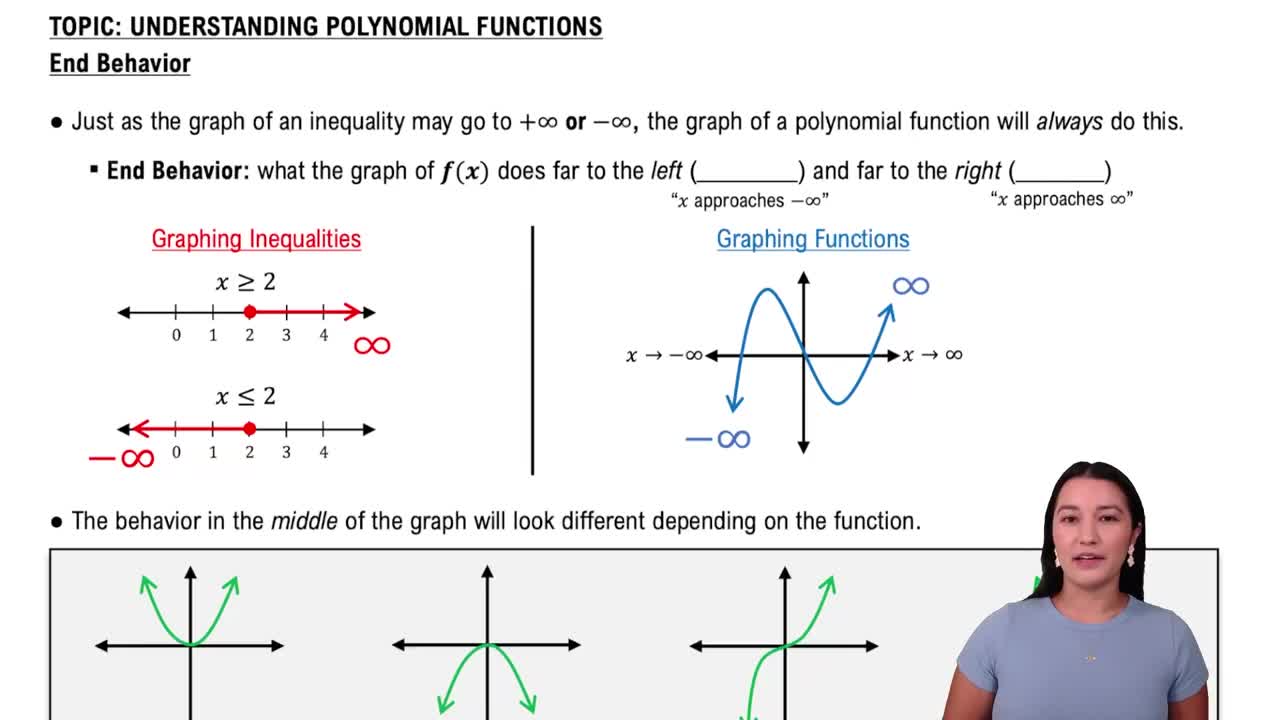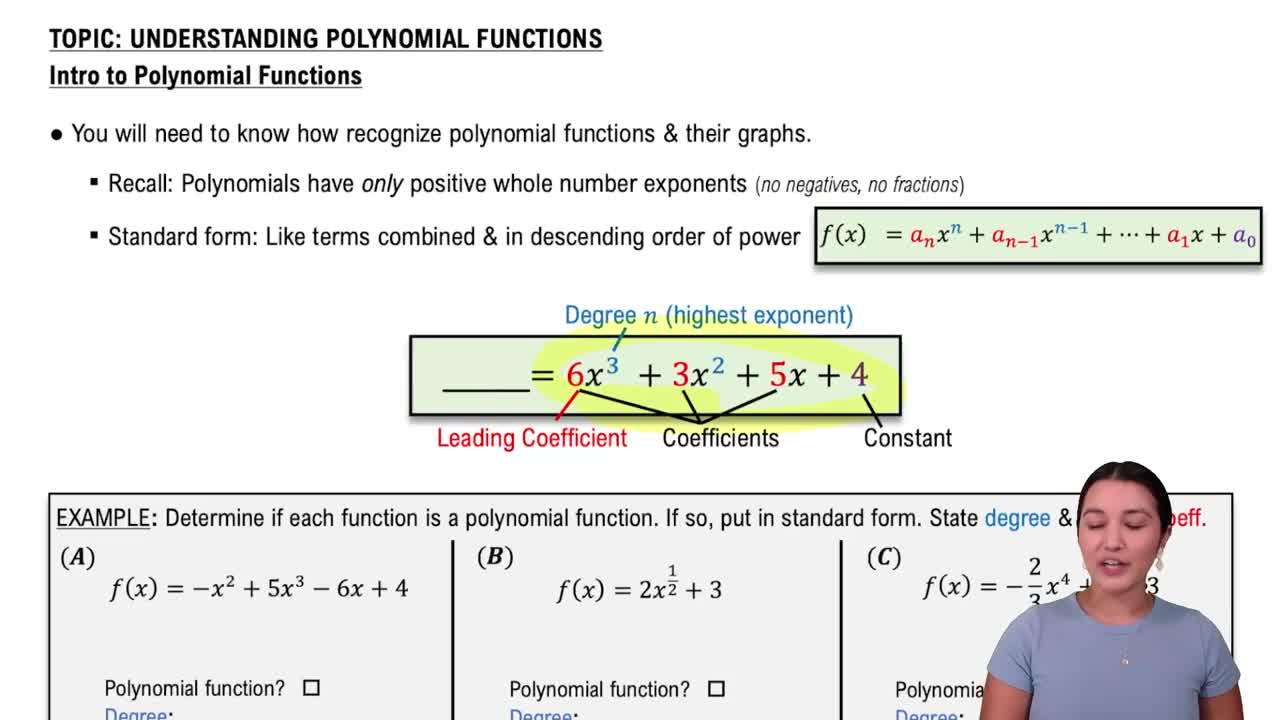Table of contents
- 0. Review of Algebra4h 16m
- 1. Equations & Inequalities3h 18m
- 2. Graphs of Equations43m
- 3. Functions2h 17m
- 4. Polynomial Functions1h 44m
- 5. Rational Functions1h 23m
- 6. Exponential & Logarithmic Functions2h 28m
- 7. Systems of Equations & Matrices4h 6m
- 8. Conic Sections2h 23m
- 9. Sequences, Series, & Induction1h 19m
- 10. Combinatorics & Probability1h 45m
4. Polynomial Functions
Understanding Polynomial Functions
Problem 26b
Textbook Question
Use an end behavior diagram, , , , or , to describe the end behavior of the graph of each polynomial function. See Example 2. ƒ(x)=10x^6-x^5+2x-2
 Verified step by step guidance
Verified step by step guidance1
Identify the leading term of the polynomial function. The leading term is the term with the highest power of x, which is $10x^6$.
Determine the degree of the polynomial. The degree is the highest power of x in the polynomial, which is 6.
Since the degree is even and the leading coefficient (10) is positive, the end behavior of the polynomial is such that as $x \to \infty$, $f(x) \to \infty$ and as $x \to -\infty$, $f(x) \to \infty$.
Draw an end behavior diagram to visually represent this behavior. The graph will rise to infinity on both the left and right ends.
Summarize the end behavior: The graph of the polynomial function rises to infinity on both ends.
Recommended similar problem, with video answer:
 Verified Solution
Verified SolutionThis video solution was recommended by our tutors as helpful for the problem above
Video duration:
3mPlay a video:
Was this helpful?
Key Concepts
Here are the essential concepts you must grasp in order to answer the question correctly.
End Behavior of Polynomials
The end behavior of a polynomial function describes how the function behaves as the input values (x) approach positive or negative infinity. This behavior is primarily determined by the leading term of the polynomial, which is the term with the highest degree. For example, in the polynomial f(x) = 10x^6 - x^5 + 2x - 2, the leading term is 10x^6, indicating that as x approaches infinity, f(x) will also approach infinity.
Recommended video:

End Behavior of Polynomial Functions
Degree of a Polynomial
The degree of a polynomial is the highest exponent of the variable in the polynomial expression. It plays a crucial role in determining the end behavior of the graph. In the given function f(x) = 10x^6 - x^5 + 2x - 2, the degree is 6, which is even. This means that both ends of the graph will either rise or fall together, depending on the sign of the leading coefficient.
Recommended video:
Guided course

Standard Form of Polynomials
Leading Coefficient Test
The leading coefficient test helps predict the end behavior of a polynomial function based on the sign of the leading coefficient and the degree of the polynomial. If the leading coefficient is positive and the degree is even, the graph rises on both ends. Conversely, if the leading coefficient is negative and the degree is even, the graph falls on both ends. In the case of f(x) = 10x^6, the positive leading coefficient indicates that the graph will rise as x approaches both positive and negative infinity.
Recommended video:

End Behavior of Polynomial Functions

 6:04m
6:04mWatch next
Master Introduction to Polynomial Functions with a bite sized video explanation from Callie
Start learningRelated Videos
Related Practice


















